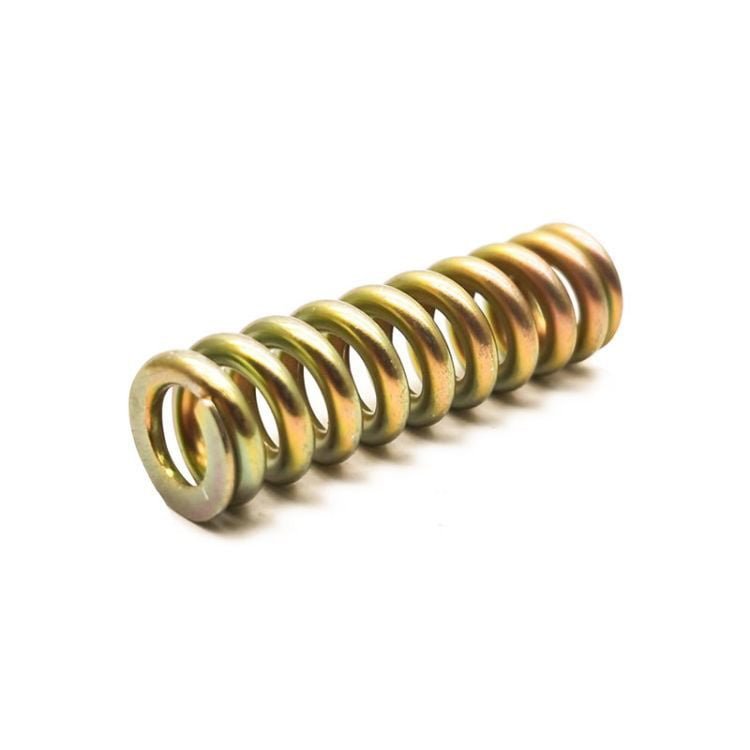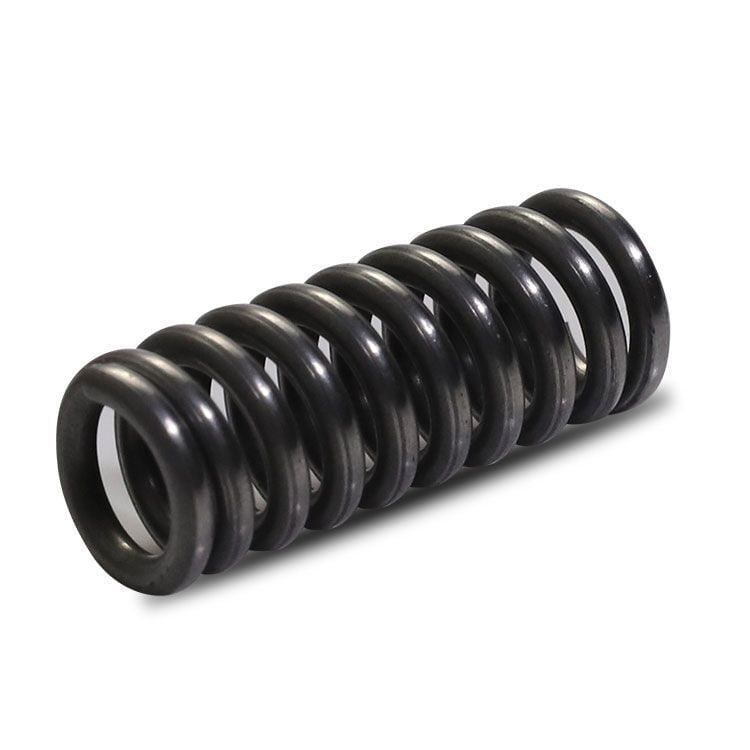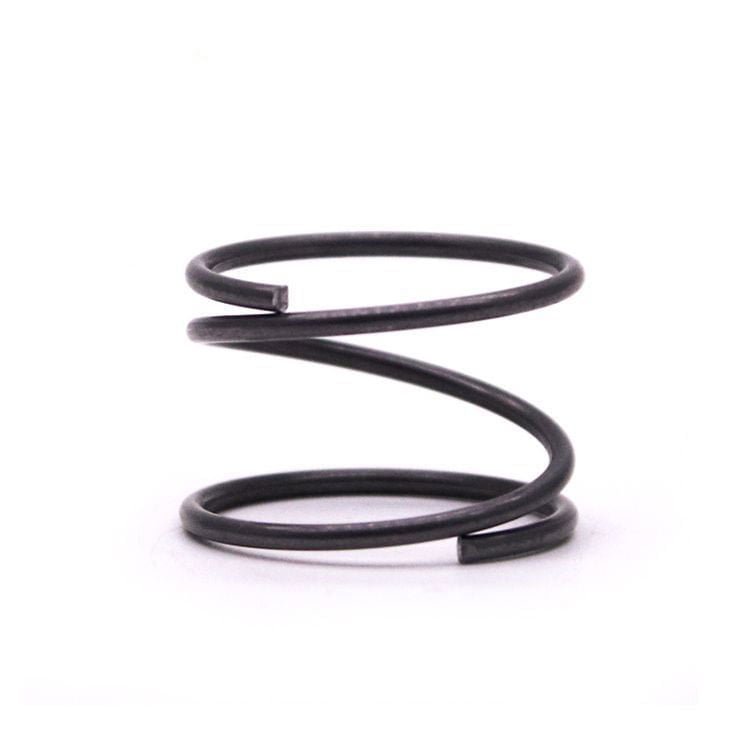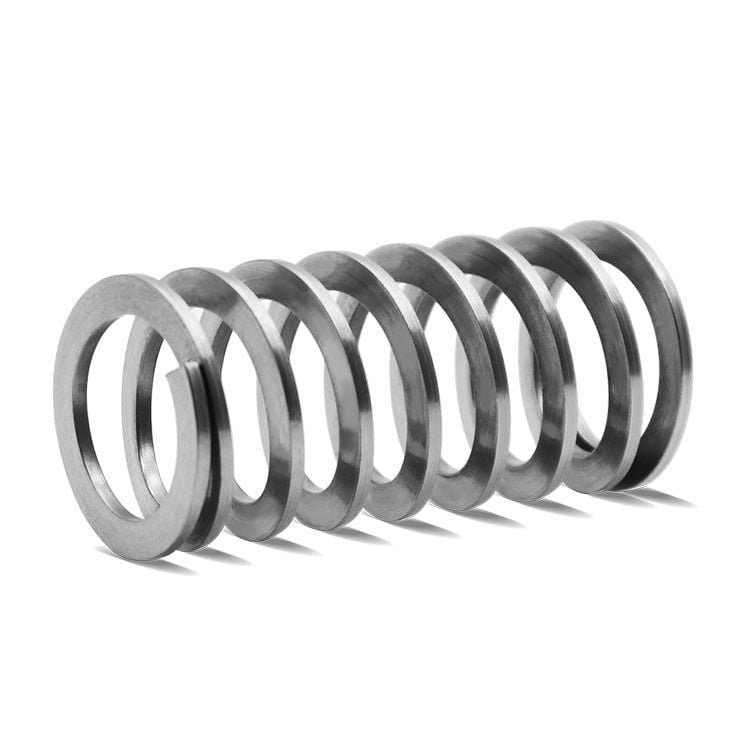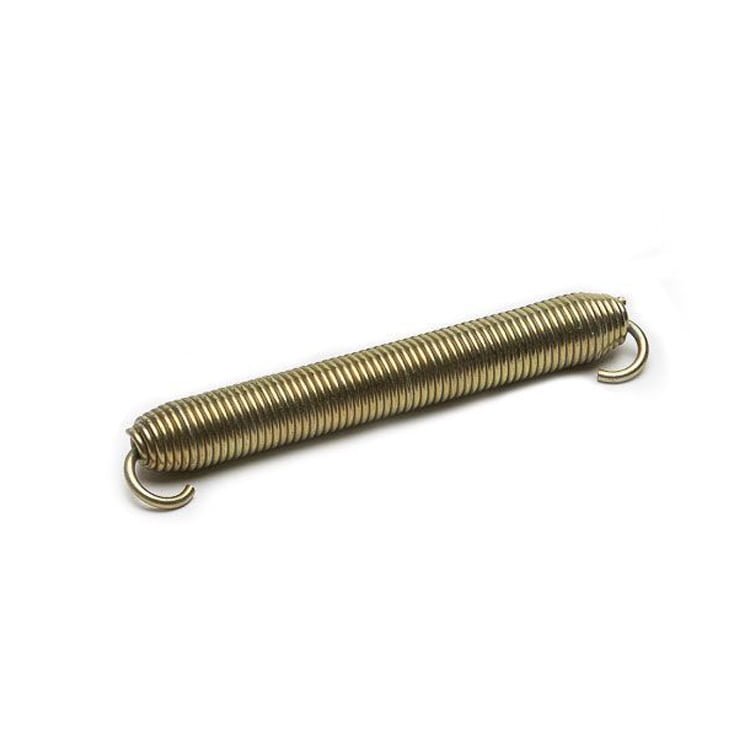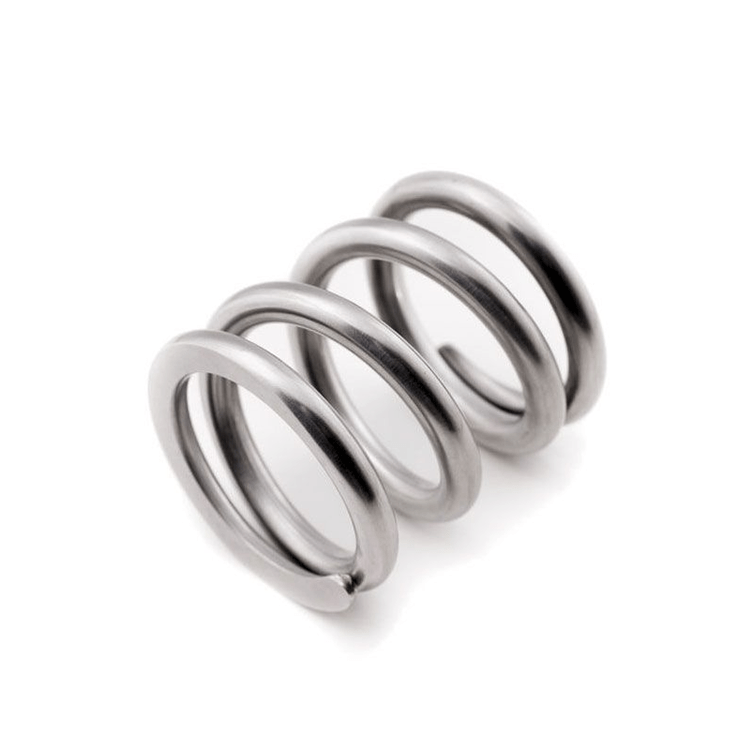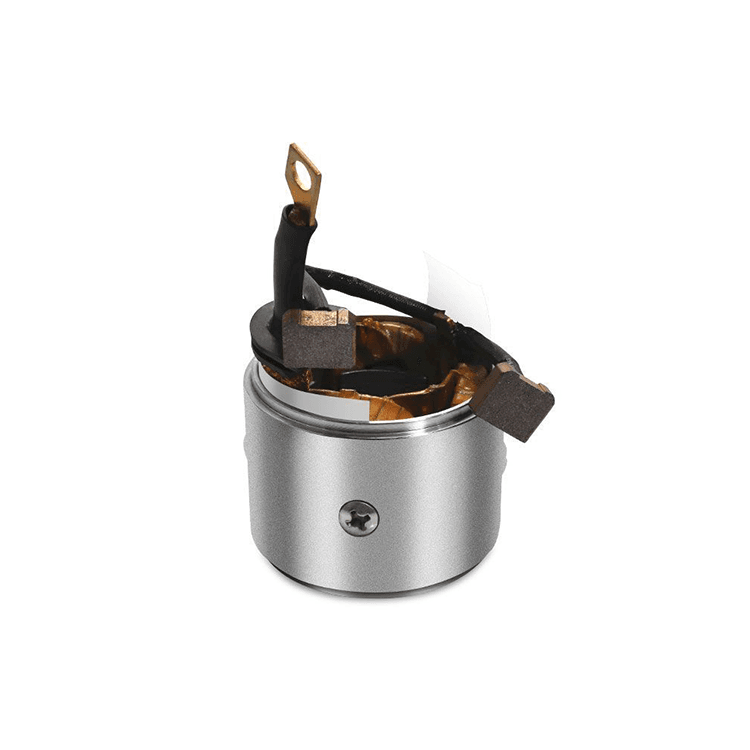Stacked wave disc spring
Stacked wave disc spring is a special spring form, which combines the characteristics of butterfly spring and wave spring, and has unique performance and application advantages.
The Stacked wave disc spring is composed of multiple waveform butterfly springs superimposed, each individual butterfly spring has a truncated conical cross-section, and the overall structure shows the composite characteristics of waveform and butterfly. This spring design allows it to exhibit higher elasticity and greater deformability under load.
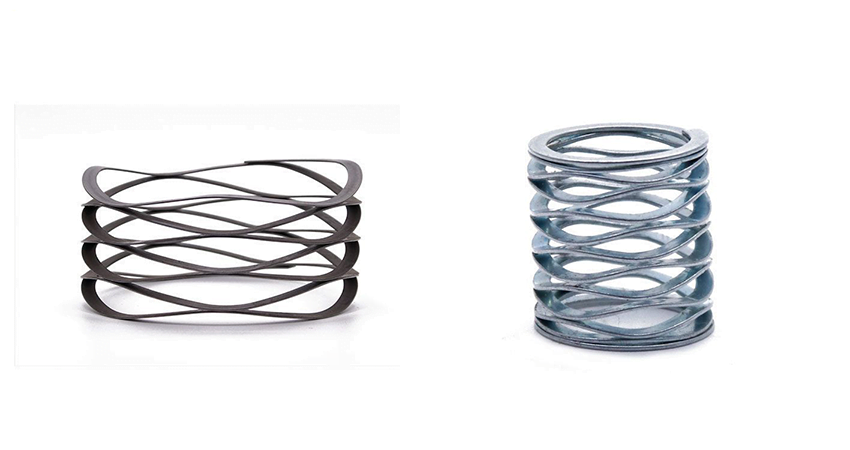
The main features of stacked wave disc spring:
- High carrying capacity: By superimposing multiple butterfly springs, the overall carrying capacity can be significantly improved, which is suitable for occasions that need to bear large loads.
- Good cushioning and absorbing capacity: the combination of waveform and butterfly makes the spring more effective in absorbing and dissipating energy when it receives shock or vibration, protecting equipment and systems from damage.
- Variable stiffness characteristics: By adjusting the ratio of the cupola height of the disc spring to the thickness of the disc, as well as the number of layers stacked and the combination mode, different spring characteristic curves can be obtained, including linear, increasing, decreasing or their combination forms.
- Compact structure: The stacked wave disc spring more compact in axial space, which is easy to install and use in a limited space.
- Easy maintenance and replacement: When a disc spring is damaged, it can be replaced separately without replacing the entire spring group, reducing maintenance costs and time.
The design of stacked wave disc spring needs to consider many factors, including load size, deformation, operating frequency, environmental conditions and so on. In the manufacturing process, it is necessary to precisely control the parameters of the material, size, shape and heat treatment process of the butterfly spring to ensure that the performance and quality of the spring meet the design requirements.
In short, the stacked wave disc spring is a spring form with unique properties and application advantages, which plays an important role in the modern industrial field. With the continuous progress of science and technology and the continuous improvement of technology, the performance and application range of laminated waveform dish springs will continue to expand and improve.
Stacked wave disc spring bear great loads in a small space, compared with other types of springs, stacked wave disc spring have larger deformation energy per unit volume, and have good buffering and vibration absorption ability, especially when superimposed combination is used, due to the effect of surface friction resistance, the effect of vibration absorption energy is more significant.
Advantages of stacked wave disc spring over other springs:
- Reduced axial space: stacked wave disc spring require less axial space than other types of springs, making them ideal for applications where axial space is limited.
- Improved load control: stacked wave disc spring provide improved load control and consistency, making them suitable for applications that require precision and accuracy.
- High force density: stacked wave disc spring have a high force density, which means that they can generate a large amount of force in a small space.
- Durable: Made of high-strength material, durable.
- Cost-effective: More cost effective, making it an economical solution for a variety of applications.
By changing the ratio between the height of the inner truncate cone and the thickness of the chassis, different spring characteristic curves can be obtained, which can be linear, increasing, decreasing or a combination of the two. In addition, variable stiffness characteristics can also be obtained by combining platters of different thicknesses or stacking platters with different number of platters.
Address
140 meters north of the intersection of Xueyuan Road and Textile Road, Huixian County, Xinxiang City, China






